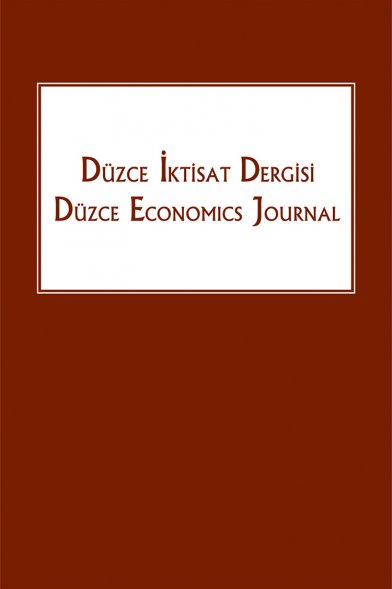Dijital Ekonomilerde BİT Sermaye Yatırımlarının Ekonomik Büyümeye Katkısı: Teori ve OECD Ülkeleri İçin Kanıtlar
Bu çalışmanın amacı, tüm biriktirilebilir sermaye girdilerine göre sabit getirili ve her bir girdinin de azalan verimliliğe bağlı olduğu Cobb-Douglas tipi bir üretim fonksiyonu ile temsil edilen bir içsel büyüme modeli çerçevesinde dijital ekonomilerde BİT ve BİT dışı sermaye yatırımlarının ekonomik büyümeye katkısını incelemektir. Bu doğrultuda çalışma, 2000-2016 dönemi kapsamında 25 OECD ülkelerinden oluşan bir örneklem üzerinden, BİT ve BİT dışı sermaye yatırımı oranlarındaki değişmeler ile işçi başına GSYH büyüme oranı arasındaki doğrusal ve doğrusal olmayan ilişkiyi kısa ve uzun dönem dinamikleri bağlamında panel ARDL & NARDL yaklaşımıyla sınamaktadır. Analiz sonucunda elde edilen bulgulara göre, doğrusal olarak BİT sermaye yatırım oranı işçi başına GSYH büyüme oranını kısa dönemde pozitif yönde; uzun dönemde ise negatif yönde etkilemektedir. Bu bulguya ek olarak, BİT ve BİT dışı sermaye yatırım oranlarındaki pozitif ve negatif şokların uzun dönemde işçi başına GSYH büyüme oranına anlamlı katkılar yaptığı saptanmıştır. Bir bütün olarak bulgular, uzun dönemde BİT sermaye yatırım oranının işçi başına GSYH büyüme oranını hem doğrusal hem de doğrusal olmayan bir şekilde etkilediğini göstermektedir.
The Contribution of ICT Capital Investment to Economic Growth in Digital Economies: Theory and Evidence from OECD Countries
The purpose of this study is to investigate the contribution of ICT capital investment to economic growth in digital economies, based on endogenous growth theory represented by a Cobb-Douglas type production function with constant returns to all accumulated capital inputs and decreasing productivity for each input. In this direction, the study examines the linear and non-linear relationship between the changes in the ICT and non-ICT capital investment rates and the GDP per worker growth rate, over a sample of 25 OECD countries within the scope of the 2000-2016 period, in the context of short-run and long-run dynamics using the panel ARDL & NARDL approach. According to the findings obtained as a result of the analysis, in a linear way, the ICT capital investment rate affects the growth rate of GDP per worker positively in the short run, but negatively in the long run. In addition to this finding, positive and negative shocks in the ICT and non-ICT capital investment rates make significant contributions to the growth rate of GDP per worker in the long run. The findings as a whole show that the ICT capital investment rate affects the GDP per worker growth rate, both in a linear and non-linear way in the long run.
